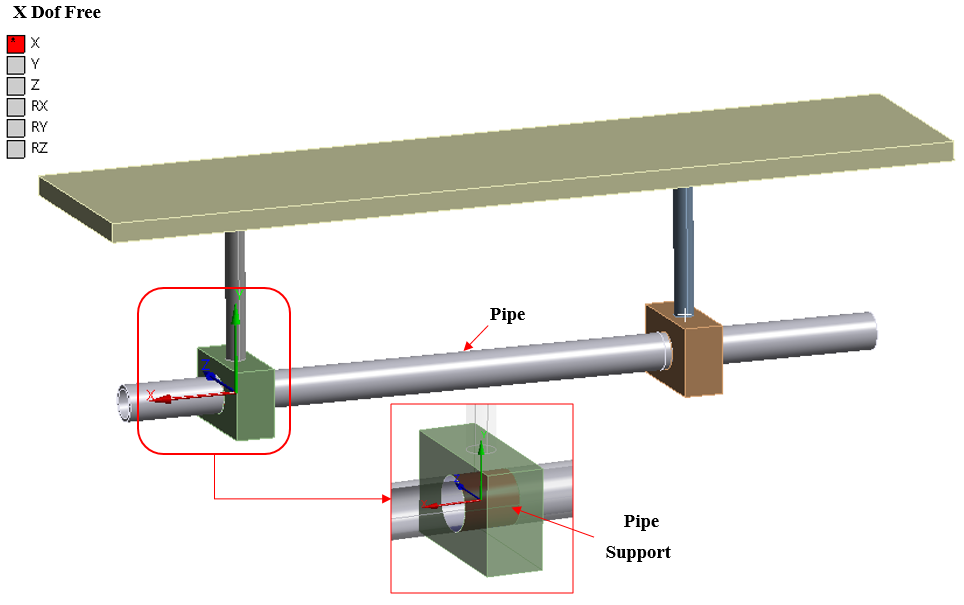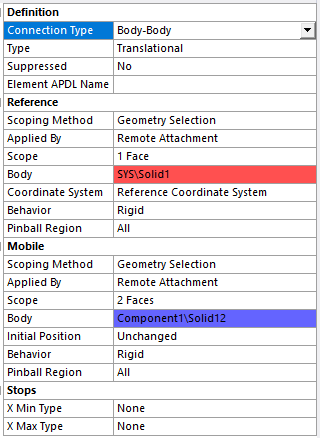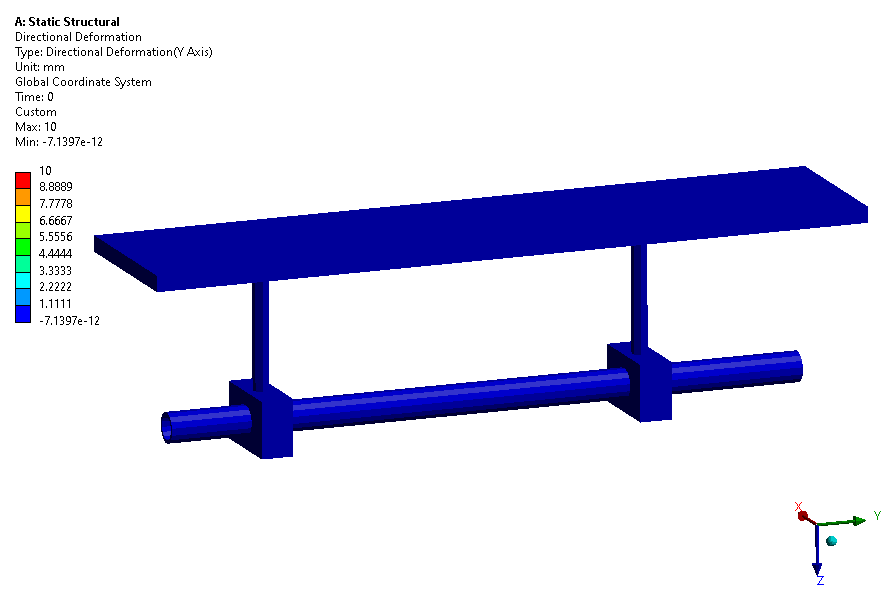Translational Joint is a type of joint which allows one part to translate along a vector in respect of another part. The parts can only translate, not rotate, in respect of each other. This joint has one translational degree of freedom, and the rotational degree of freedom is zero. An axis of the translation is the z-axis, thus it has 5 constrained degrees of freedom such as Uy, Uz, Rx, Ry, Rz, etc and One free translational degrees of freedom. Figure 1 shows the translational joint between pipe and square block.

How to Create Translation Joint ?
In order to create translational joint, the user needs to specifies its location and orientation. The location of a translational joint does not affect the motion of the joint. The orientation of the translational joint, however, decides the direction of the axis along which the parts can slide in respect of each other. The direction of the motion of the translational joint is parallel to the orientation vector and passes through the location. Figure 2 shows the translation joint definition details in ANSYS. You can create translation joint by selecting reference body and mobile body. Here you need to rotate the reference coordinate system system so that X axis will align with pipe axis.

Figure 2: Translational Joint Details
What is Sliding Joint ? What is difference between sliding and translational joint?
The sliding Joint is most popular in oil and gas piping field to provide the pipes support (clamp support or cable trays supports). The pipe carries high temperature fluids resulting pipe expansion and contraction with respect to temperature rise of fall. Hence, pipe supports are design in such a way that, they will allow sliding (Axial translation movement) so that stresses will be relaxed. In translational joints also the one translational dof is allow and hence translational joints are also called as sliding joints.
Below Animation shows the working of translational joint. here, pipe is sliding between the two square blocks.

Summary:
- Translation joint is type of joint with one translational degree of freedom.
- Translational joint is used to provide support with sliding allow (axial movement).
- Translational Joint is also called as sliding joint.
